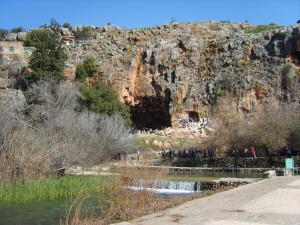Wes Howard-Brooke’s Becoming Children of God: John’s Gospel and Radical Discipleship, recommended by John Dear, really helps me see the social dimension of John’s Gospel. Chapter 6 which begins today is John’s long chapter on the Eucharist—Jesus is the Bread of Life.
John 6:1-15 is the feeding of the 5000. Jesus, condemning the Judeans, has returned to Galilee—he is back in the boondocks where large crowds follow him and hunger after him. He is home. The locale is the Sea of Tiberias (Galilee). This is where Herod built a great city to replace the city of Sepphoris. It was built on “a necropolis—a city of the dead—which made it unclean under the Torah. Thus the Jesus’ followers from this city were unclean. They were seeking relief from the tyranny of the “Judean Temple-state.” Howard-Brook goes on to say, that the crowd “in their pursuit of basic economic security . . . had chosen to let go of the religious security of Torah obedience. In the world of the Johannine community, these people were not a historical relic like the Jerusalem priests, but a thriving mass of humanity in search of satisfaction of their hunger.” People in many communities in the United States and around the world can readily identify with the hungry crowd.
Jesus throws a challenge Phillip’s way. How can we feed so many? This is really a trick question. Will Phillip respond on a human economic model or on the model of Moses in the desert—God will provide. Phillip fails the test. “We do not have enough money to buy food to feed all these people. Wrong answer. Correct answer—God gave manna in the desert to feed the people. Trust in God. God will take care of their needs. Our trust and security is in God. Jesus is the Bread of Life who now nourishes us in Eucharist.
They find a boy with barley loaves—cheap bread of the peasants. Jesus takes from what he has and invites the crowd to recline on the grass. He is not going to just give them a few morsels and send them on their way. Jesus is inviting them to share in a meal—an communal action. We know the rest of the story. The people are satisfied and the leftovers fill 12 baskets.
The crowd that was seeking food now seeks a king. The Romans, not unlike any government of any time, used the bread and circus ploy. Give them food and provide entertainment to distract the people. As long as they have food and games, they will be happy and will not challenge what government is doing to them.
Howard-Brook points out that the crowd was thus engaged in treasonous conduct. They wanted to overthrow the Emperor and priestly leaders and make Jesus their king. This was not what Jesus was about. He withdrew to solitude.
By the end of chapter 6, we will know clearly that Jesus is the Bread of Life come down from heaven. We hunger for much. The desires of the false self surpass our ability to satisfy them. Consumerism fills some of our cravings but not our deepest cravings. Life is about more than things. Life is about more than doing. Life is about being.
Jesus brings this out because he is the New Moses—”I am.” Here Jesus is saying, I Am the Bread of Life.” Jesus is always focused on being—being in relationship with Abba God and with the people around him. Life is about being and relationships—not commodities.
We look around and see so many people in our country and the world who are dissatisfied. Their needs are not being met. They do not have enough food and water. But many who are angry are well fed and never thirst. They eat the finest meats and the choicest wines. Yet, they hunger still.
We hear cries for freedom. Our freedoms have been taken away. Ultimately, freedom is the ability to commit oneself to something beyond self—service of others. The Constitution has been violated. Yet, the “constitution” that should matter most for believing Christians is the “constitution” we call the Gospel.
It is a matter of values—the source of our values. Jesus did not give the people mere bread. He gave them himself—the Bread of Life. Jesus alone can satisfy our many hungers.

